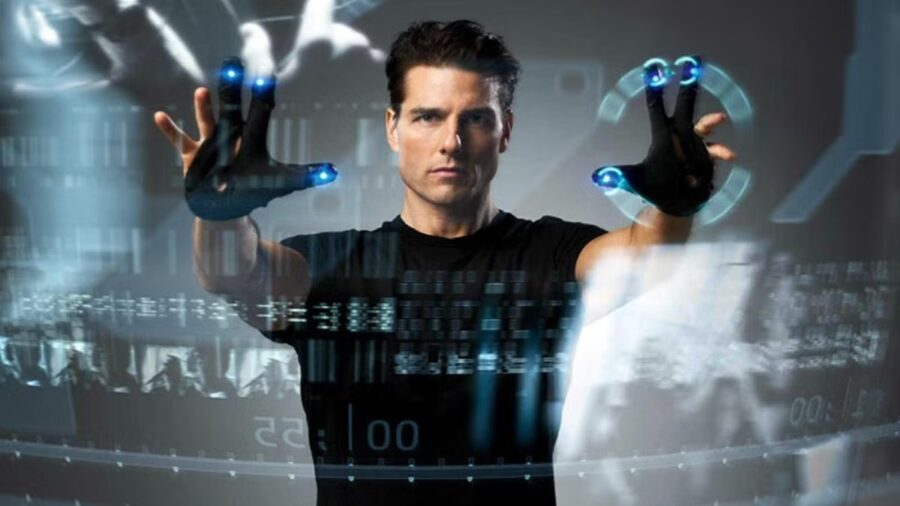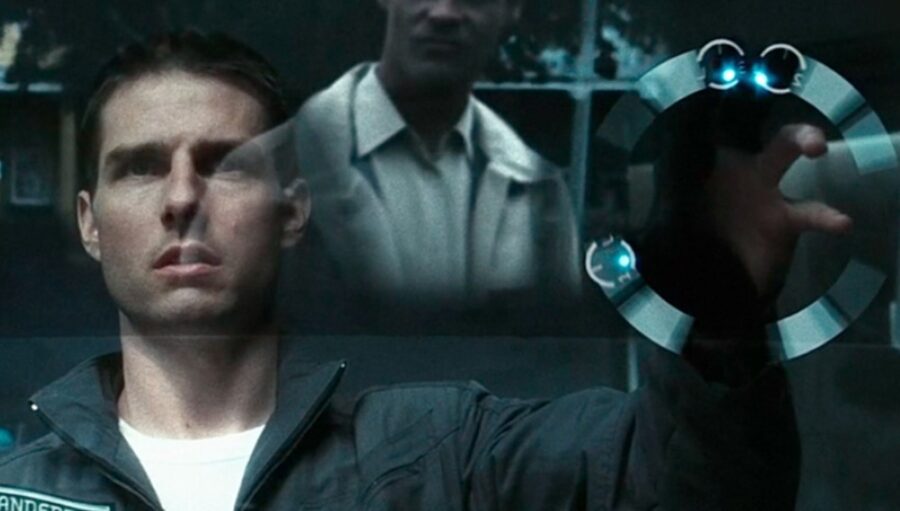How Steven Spielberg Created A Realistic Future In Minority Report

The look of a sci-fi film is very important to sell the complex concepts contained within it. Half of the work in selling an audience is done when a world feels fully fleshed out and consistent, giving the audience something to consider and then reconsider.
Sci-fi gives people the option to escape to far-off distant lands, and making those places realistic is part of the job. It’s what makes great sci-fi, well, great.
What separates movies like Minority Report from other future worlds in movies like In Time, was that it felt livable and practical. Steven Spielberg accomplished the world-building in Minority Report by bringing together scientists, architects, urban planners, and engineers in an “idea summit.
In 2012, Wired.com brought those same people together to recount their experience working with Spielberg on the future world of Minority Report for the 10th anniversary of the movie based on the Philip K. Dick short story.

One of the members of the “idea summit,” futurist and co-founder of scenario-planning firm Global Business Network, Peter Schwartz, talked about the amazing computers in Minority Report…
What about weapons? Surveillance — how did it work? One that moved very quickly was the gesture control of computers. That really began with Jaron. There was pretty quick agreement about what you saw onscreen.
Then Jaron Lanier, a computer scientist and virtual reality pioneer, discussed how they could implement this technology…
We were doing these glove technologies that could be combined with displays. That was totally commonplace during that time as a demo thing — not as a consumer product. My recollection is that I brought in a working one. I could just pack one in the trunk.
The spooky thing about the computers of Minority Report is that it seems like it’s quickly becoming a reality today. Computers are mostly touchscreen or work with gestures, this would’ve been in its infancy in 2002 but commonplace today. Transparent laptops are now a thing as well.
About the look and feel of Washington D.C. in 2050, Alex McDowell, the production designer on Minority Report, talked about the real-life limitations of constructing buildings in the nation’s capital…
People from DC were saying that you can’t build anything higher than the Capitol building, and you’ll never be allowed to, even in 50 years’ time. So we moved all of our architecture across the Potomac River and developed a vertical city, although there was a lot of resistance to that from the group.

Joel Garreau, principal of consulting firm The Garreau Group and a reporter at the Washington Post in 1999, interjects with over-ruling the city’s guidelines for dramatic reasons for the film…
I know you urbanists love to think differently, but dream on. They needed the high-rises for the chase scenes.
Schwartz then recalled Spielberg wanting to make the film a little bit more flashy than practical when it came to the chase scenes in Minority Report. Spielberg wanted to make them memorable.
Steven wanted to make it very realistic, but there were a couple of things he really wanted that were not realistic. The most obvious was the jet packs. But the director gets what he wants!
In the end, Hollywood filmmaking won out to amp up action with style. Maybe jetpacks would have been too far-fetched while trying to create a realistic future city, but they look cool even though they’re not practical. Hopefully, we’ll be looking to buy our own jetpacks in the year 2050.












